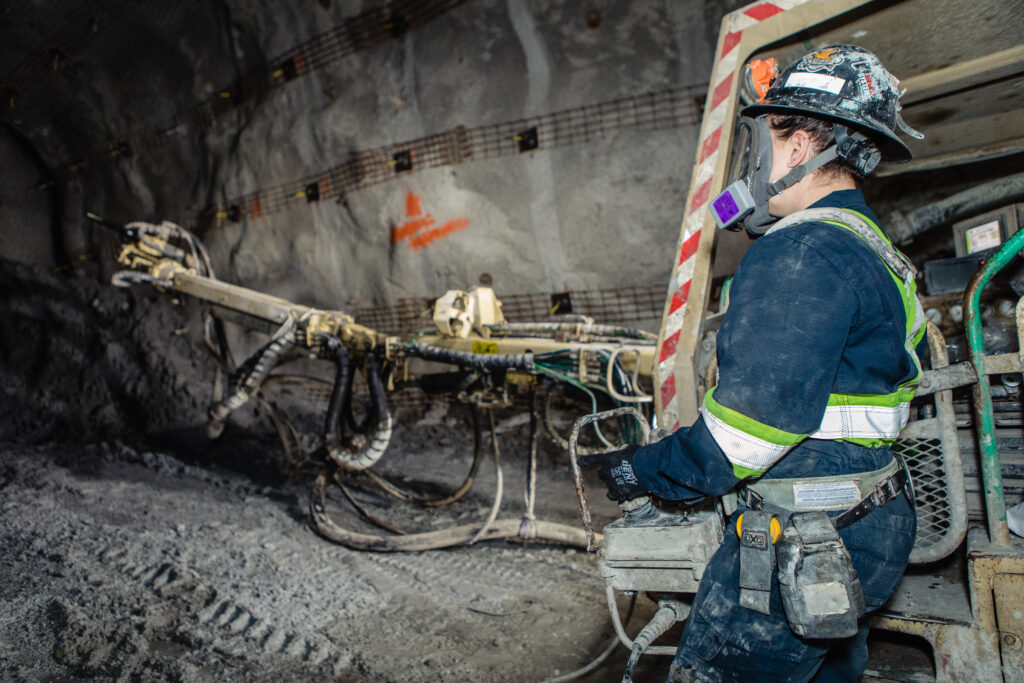
New Gold’s (TSX: NGD; NYSE: NGD) exploration drilling at the New Afton copper-gold mine in British Columbia has produced among the best intersections yet as the company looks to extend the mine life past 2030.
The latest results from six holes drilled from the C-Zone infrastructure, targeting the K-Zone’s bornite-bearing target, expanded the mineralized envelope, the company said in a statement this week. Hole EA24-485 cut 2.01% copper and 1.79 grams gold per tonne over 217 metres (40 metres estimated true width), and hole EA23-477 returned 1.21% copper and 1.03 grams gold over 214 metres (22 metres true width).
“Success here is meaningful, as K-Zone is one of several areas located near mine infrastructure that provide potential to expand reserves and extend mine life,” Canaccord Genuity Capital Markets mining analyst Jeremy Hoy wrote in a Wednesday note to clients.
Further results may demonstrate the value of some of these expansion opportunities, extend the mine life, and/or sustain higher production levels beyond 2027, Hoy said.
New Gold has reiterated its strategy to extend the New Afton mine life beyond 2030 through the drill bit. The results showed the company had expanded K-Zone and confirmed high-grade mineralization in its bornite-bearing core, he said. Copper and gold grades are proving to be higher in the bornite-bearing core of K-Zone compared to the haloing chalcopyrite-bearing copper-gold mineralization.
“The latest K-Zone drilling includes some of the best-mineralized intervals drilled at the New Afton mine and expands the mineralized envelope, highlighting the potential for a new mining zone close to existing mine infrastructure,” New Gold president and CEO Patrick Godin said in the company’s new release this week.
The company expects to complete its 370-metre exploration drift in June, providing additional drill platforms to accelerate drilling in the eastern part of the mine, which includes the K-Zone.
New Gold says there are many opportunities for resource conversion at the C-Zone Extension, East Extension, and D-Zone, which Godin said would require essentially no additional capital. In contrast, the D-Zone and the East Extension would require more investment.
New Gold plans to provide more exploration updates this year.
BMO Capital Markets resumed coverage on New Gold on Thursday, citing the May 13 deal through which the miner increased ownership of New Afton to 80.1% from 54%. The transaction with the Ontario Teacher’s Pension Plan requires an upfront cash payment of $255 million.
The deal boosts New Gold’s attributable life-of-mine cash flow for New Afton by $526 million (39%) to C$1.9 billion. According to BMO mining analyst Brian Quast, it increases the project’s net asset value (NAV) by C$383 million, or 39%.
“The combined impacts of the transactions saw a positive impact on our consolidated NAV as it increased to $2.4 billion from $1.8 billion, or about 30%,” he wrote in a note to clients. “We believe this transaction has upside potential and maintain our ‘outperform’ rating.”
The company is drawing C$25 million from its credit facility and using existing cash for the $255 million payment to the pension fund. New Gold also raised C$173 million through a bought deal of 100.4 million shares at C$1.72 each.
At C$2.97 apiece, New Gold’s Toronto-quoted shares are trading near the 12-month high of C$3.15, having touched a low at C$1.18 in the past 12 months. That’s a 167% difference. The company has a market capitalization of C$2.34 billion.